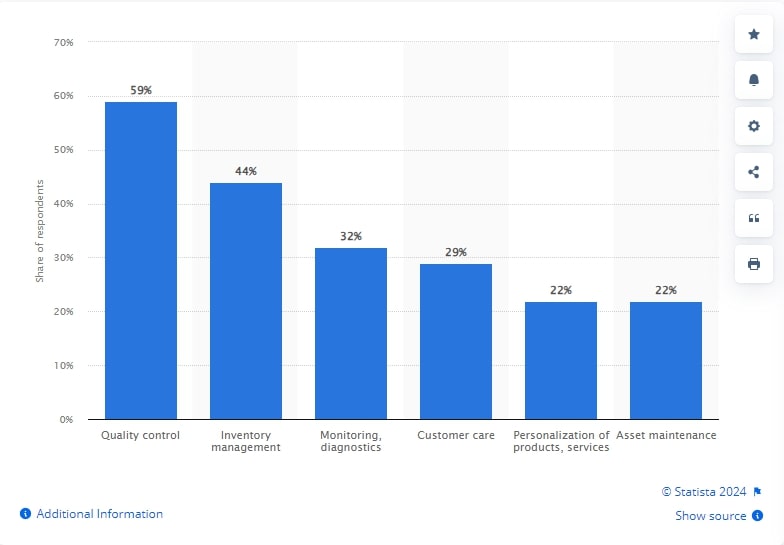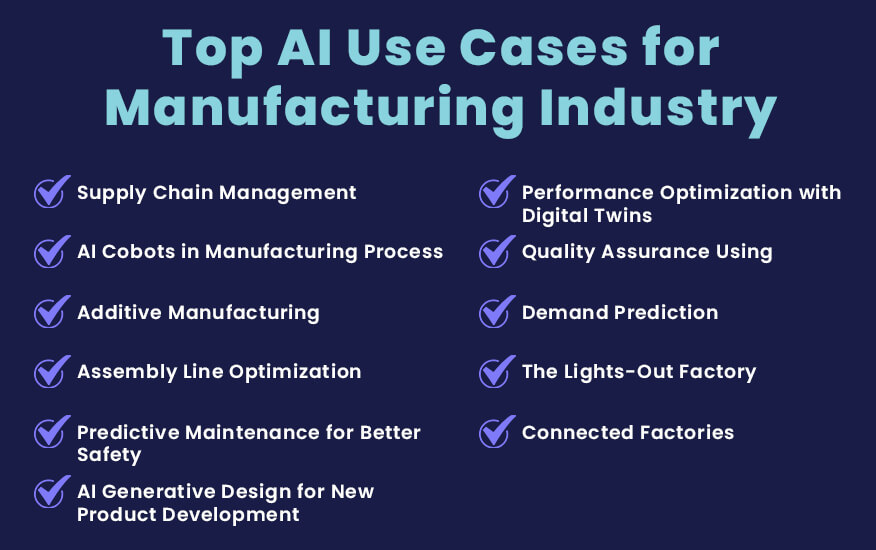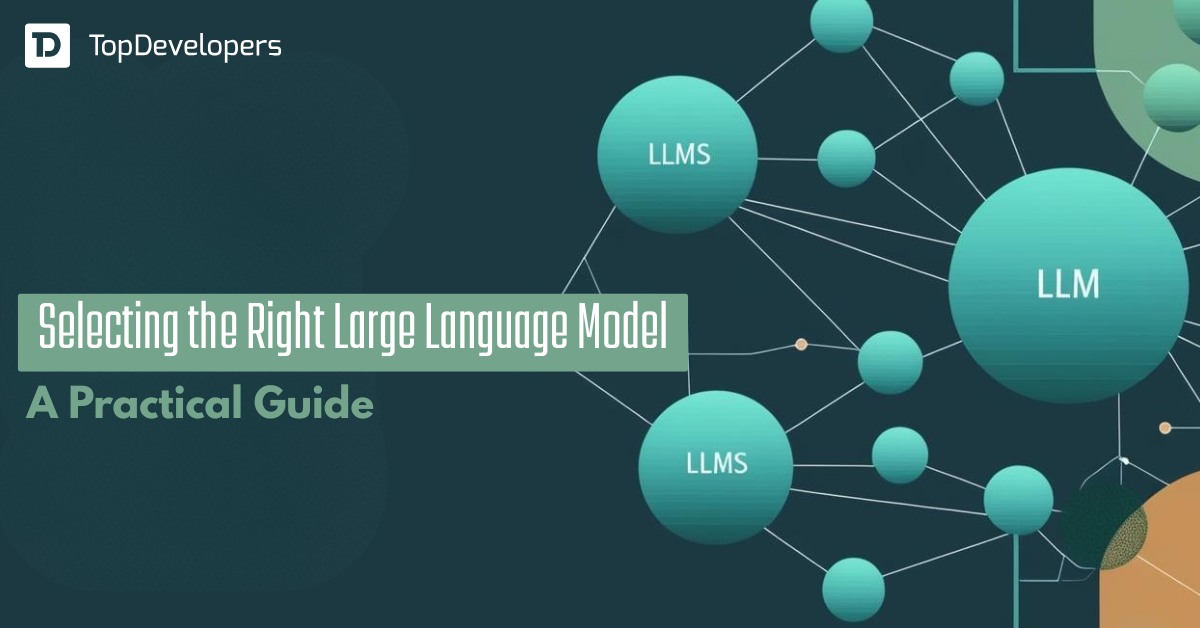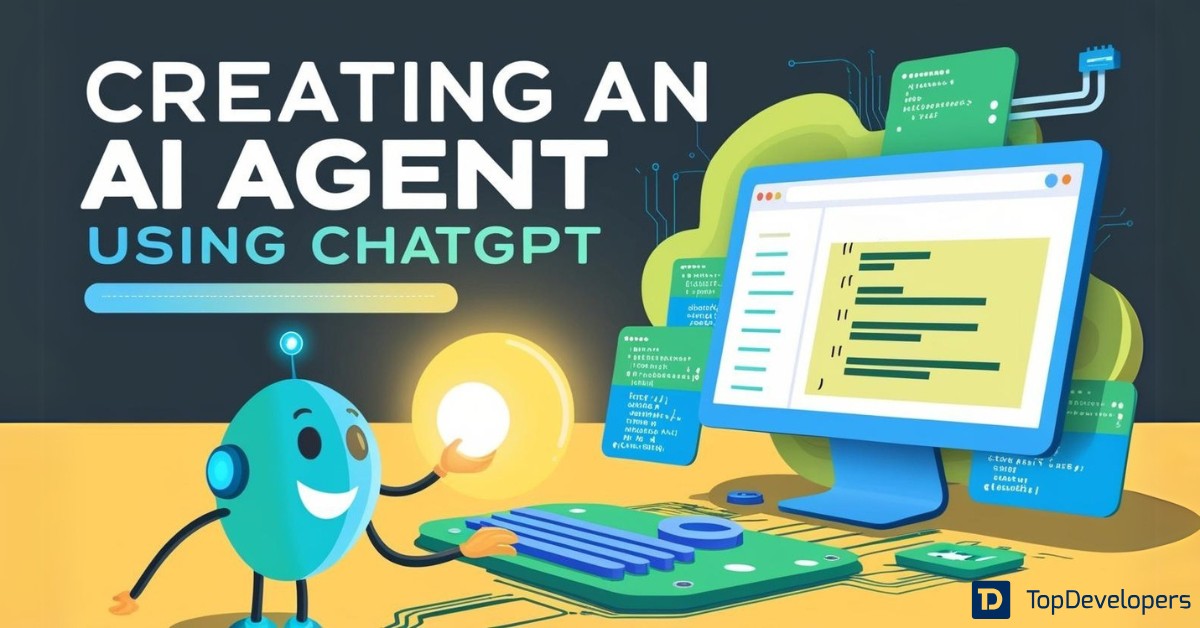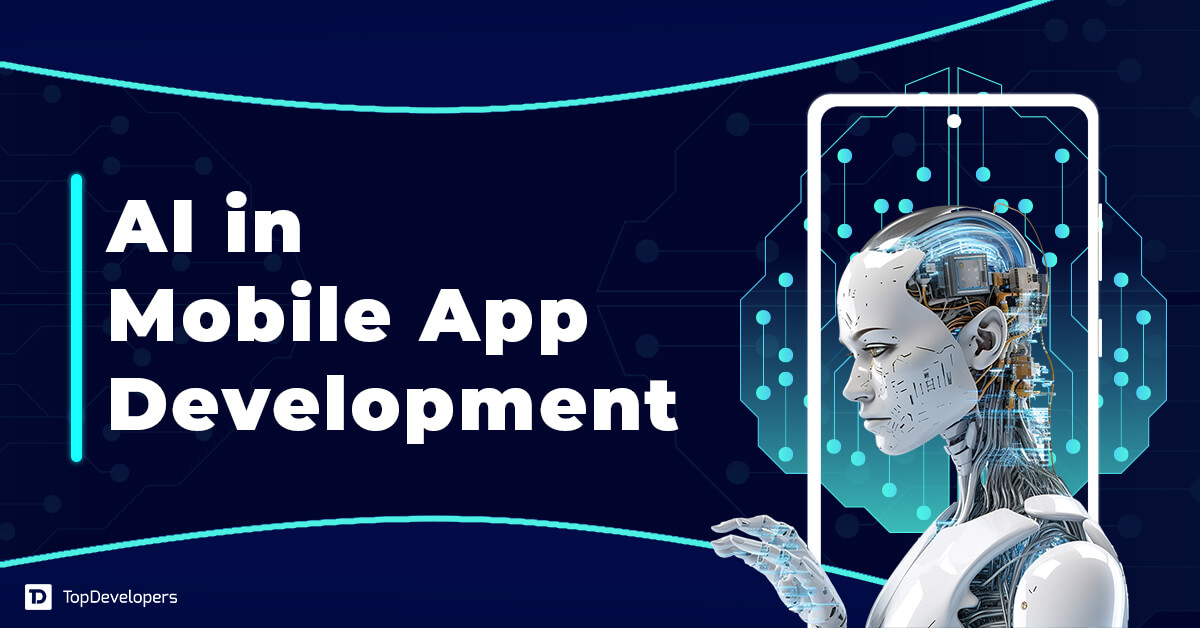
Quick Summary: The manufacturing industry is grappling with skilled professionals, supply chain issues, digitization, and automation challenges. Industries deploy large Human Resources to tackle these issues, while AI solutions alone can solve many with ease. Want to know how? This article helps you explore top AI use cases in the manufacturing sector. Keep scrolling and read the article.
Artificial Intelligence (AI) has become crucial to manufacturing, helping manufacturers carry out their day-to-day operations seamlessly. With AI-powered tools, like autonomous robots or robotic process automation, digital twins, error detection, and machine learning-powered predictive analytics, manufacturing app development companies can help large manufacturing businesses streamline their business processes, manage efficiency, increase productivity, and minimize the damage done to the environment.
Implementing or integrating AI into manufacturing is not about replacing humans but enabling them to work more safely and efficiently. Artificial Intelligence has brought a new revolution in the Manufacturing sector where machines and humans work together. While AI helps them carry out their task more efficiently with data analytics, experts at manufacturing units can make informed decisions with better predictions. However, as you have a range of AI applications, which one do you need?
This article will help you understand the AI use case that best suits your manufacturing needs. We have thoroughly analyzed various top and popular AI use case applications for the manufacturing industry and will cover a wide range of topics.
- Basic of AI
- AI’s impacts on manufacturing
- And the top use cases of AI in manufacturing
Let’s explore these use cases of AI and decide which one is suitable for your project.
Table of Contents
- What is Artificial Intelligence (AI)?
- How does AI Impact the Manufacturing Industry?
- 11 Remarkable Use Cases of AI in Manufacturing Industry
- #1: Supply Chain Management
- #2: AI Cobots in Manufacturing Process
- #3: Additive Manufacturing
- #4: Assembly Line Optimization
- #5: Predictive Maintenance for Better Safety
- #6: AI Generative Design for New Product Development
- #7: Performance Optimization with Digital Twins
- #8: Quality Assurance Using
- #9: Demand Prediction
- #10: The Lights-Out Factory
- #11: Connected Factories
What is Artificial Intelligence (AI)?
Artificial intelligence is the science that makes machines act and think like humans. It’s one of the powerful branches of computer science that empowers machines (with computational models) to solve complex tasks or perform tasks that previously required human intelligence. AI technology can process a large amount of data in a moment that humans may take hours or even days to resolve. It can recognize patterns, analyze data, understand human behavior, make decisions, and even judge like humans.
Now, artificial intelligence is not the name of one technology; it’s an umbrella term that encompasses various technologies. For example, machine learning (ML), deep learning, and natural language processing (NLP) are the branches of AI. These three technologies power machines to analyze data, segregate them into systematic patterns, recognize things/ objects, and help make informed decisions.
How does AI Impact the Manufacturing Industry?
Before we understand the impact of artificial intelligence in manufacturing, we need to understand the challenges that manufacturers around the world face. For example, maintaining supply chain, quality control, monitoring, diagnostics., Personalization and asset maintenance are some of the most challenging parts for manufacturing industries to tackle.
Artificial intelligence (AI) can impact the manufacturing industry in many ways, including:
- Finding new efficiencies and cutting waste
- Understanding market trends and changes
- Meeting regulations and industry standards
- Reducing environmental impact
- Increasing product quality
- Finding and removing bottlenecks in production processes
A survey by Statista reveals that quality control is the most important use case for artificial intelligence in the manufacturing sector. However, there are various other things for which manufacturers use the technology in their establishment.
In simple words, artificial intelligence is crucial for the manufacturing sector, helping them solve all the challenges that humans can’t. Whether it is cybersecurity, protecting data, fulfilling skill gaps, ensuring sustainability, tackling capacity constraints, and minimizing downtime, analyzing equipment data, directing faults, or even adapting to changing market needs, AI helps improve the manufacturing process comprehensively.
11 Remarkable Use Cases of AI in Manufacturing Industry
Artificial Intelligence (AI) in manufacturing is the crucial concept of “Industry 4.0” trends. This refers to the trends that manufacturers around the world are implementing into their business. For example, it’s about the integration of technologies, such as IoT, cloud computing, Artificial Intelligence (AI), and Machine Learning (ML) to enhance productivity, efficiency, and flexibility. With the implementation of AI, businesses can Achieve greater efficiency and Automation In their manufacturing settings.
Quality control and inventory management monitoring, diagnostics, customer care, and predictive maintenance, AI can help to make your manufacturing unit more efficient and productive. We have discussed a lot about AI in manufacturing and its impact on the industry. Now, let’s explore some of the top AI use cases in the manufacturing industry.
#1: Supply Chain Management
AI strategizes supply chain management into manufacturing. You must be wondering how AI is used in supply chain management. Manufacturing businesses use the technologies to optimize shipping and delivery. Overstocking and understocking to logistics and inventory have always been a challenge in manufacturing settings. Artificial Intelligence eliminates these challenges in a variety of ways.
- Providing demand forecasting: With AI, manufacturers can easily analyze a large set of data and predict the demand for goods required for production and even product quantity after sensing the market demand. They can optimize their inventory level, create effective production plans, and even reduce the risks of overstocking and stockouts.
- Inventory management: Integrating AI into inventory enables manufacturing settings to assess historical sales data, analyze trends, and gauge other factors to maintain inventory levels. Artificial intelligence can help monitor inventory stock levels and maintain reordering in real-time.
- Logistics management: Manufacturing establishments can use artificial intelligence to optimize the shipping and delivery routes. How…? With real-time traffic conditions, weather forecasts or road closures, just like modern Maps means, AI can fetch all these data to help managers manage logistics, minimize delivery time, reduce fuel consumption, increase driver and product safety, and more.
- Boost supplier performance/ avoid delays: Manufacturers can use AI to monitor supplier performance. AI can help identify patterns, explore the reasons for delays, and analyze and track the supplier lead time. Using these data, companies work to boost supplier performance. More than that, AI can help predict delays so you can address the concern before time.
- Transparency in data, process, and production: Integrate AI into your manufacturing plant and establishment, and get better visibility across all departments, from supply chain to production. This will help you save costs and time.
- Process automation: Manufacturers spend a lot of human hours, effort, and costs behind repetitive tasks that cause sluggish production performance. With AI, they can automate repetitive tasks and deploy the workforce, team, and employees on the core business parts, particularly the high-value activities, to achieve better efficiency.
- Resilient supply chain: According to data, an AI-enabled supply chain can reduce logistics costs by 15%, improve inventory management by 35%, and service by 65%. What more can we expect from artificial intelligence in manufacturing?
#2: AI Cobots in Manufacturing Process
Historically, manufacturers have used robots to automate manual tasks, but Chatbots have taken a different approach. Cobots are referred to as collaborative robots designed to work alongside humans safely. It not only automates tasks but safely works alongside humans. That means they augment human capabilities with their own. Besides, Cobots helps manufacturers scale up operations and automate segments of production, such as screwing, sanding, and polishing. Most importantly, they do not need any personal space as they can work safely on a regular plan floor, right beside humans, carrying out conventional manufacturing machinery. For example, it can be injection molding and stamping presses or others.
The Cobots, or collaborative robots, not only automate processes but also create additional space for remote work. Here’s how Cobots can function in manufacturing.
- Automate repetitive tasks: Manufacturing settings have various repetitive tasks, such as picking, placing parts, welding, screwing, sanding, and painting which Cobots can do efficiently.
- Achieve greater efficiency and consistency: Cobots powered by AI can work autonomously and perform various tasks with accuracy without any human support.
- Testing and inspection: There are many activities within manufacturing settlement that require proper testing and inspection. Cobots can help with identification, monitoring, probing, gauging, and more.
#3: Additive Manufacturing
Additive manufacturing, aka 3D printing, is a process through which products and objects are to be manufactured layer by layer. Additive manufacturing (AM) with AI can improve the process, reduce costs, and speed up production. It can help manufacturing settings optimize the way materials are used, dispensed, and applied. Here’s how AI in additive manufacturing works.
- Design suggestion: AI in additive manufacturing improvises Autodesk Fusion’s ability. That means it can create various design options.
- Quality control: It optimizes efficiently how the material should be used and applied. It can optimize the design of complex products and even be used for detecting and improving errors caused by 3D printing technology. Apart from all these, machine vision can work to evaluate part quality.
- Predictive maintenance: Manufacturers can use machine learning to monitor 3D printers and alert managers if they need maintenance in advance. Machine learning in manufacturing, particularly in additive manufacturing, can help reduce downtime.
- Process optimization: AI can help compare product designs with actual finished products so you can understand the gap between processes. Overall, AI helps with process optimization by detecting the gap and minimizing the process.
- Closed loop algorithms: With close loop algorithms, printing text documents becomes easy.
#4: Assembly Line Optimization
Assembly line optimization is used to improve the production process, such as enhancing efficiency and minimizing manufacturing costs. It is done by setting a sequence of tasks in order or an assembly line. For example, if there is any product that needs to be assembled, the assembly line makes this in order by moving it along a conveyor belt or line.
Here’s how AI in the Assembly line makes it safer and more efficient.
- Safety: AI in an assembly line can make the production, such as the assembly process, safer. For example, it can effectively monitor production in real-time. Can collaborate with the production team and alert them to prevent any accident or assembly line error.
- Efficiency: AI in assembly lines helps to improve efficiency by filtering data and analyzing the production process.
- Collaboration: AI in the assembly line makes extracting process information and human interaction smooth while helping amplify human capabilities.
- Automation: AI can make industry robots smart —just like BMW uses software, such as NVIDIA, to train robots, helping them automate the assembly process.
#5: Predictive Maintenance for Better Safety
Predictive maintenance is crucial in manufacturing. Usually, it’s an approach that helps manufacturers maintain industrial equipment by taking a proactive and data-driven approach. For example, AI sensors in industrial equipment can help AI monitor and predict if any equipment in the establishment requires maintenance so it can be corrected and avoid unscheduled downtime.
With predictive maintenance, the manufacturer can;
- Reduce downtime: A predictive maintenance program powered by AI can help managers in the manufacturing company predict maintenance requirements and take proactive measures.
- Save costs: With predictive maintenance, manufacturers can avoid costly repairs by simply addressing the issues before they happen.
- Help equipment last longer: Predictive maintenance helps identify errors even before they occur. By taking proactive equipment maintenance, they cannot just save budget on costly repairs but also keep their equipment reliable.
#6: AI Generative Design for New Product Development
Generative design is similar to Generative AI. You must have experienced generative AI while exploring things on Google or interacting with AI products, such as ChatGPT, Dall-E, or Gemini. However, AI Generative design is a bit different than its other counterparts as here you simply have to tell it to design products.
Here’s how it makes manufacturing more processed and streamlined;
- AI Generative design helps manufacturers spit out product design blueprints simply by entering parameters. For example, it can be the material type, size/weight of product, manufacturing method, cost, et cetera.
- Manufacturers with generative designs can have multiple options for new products. This gives them the flexibility to create and pick the best one from the many options out there.
- In additive manufacturing, Generative design can help conceptualize the manufacturing process.
- Manufacturers can also use AI generative design to create exclusive components. Building new components with AI power generative design that can be cost-effective, lighter, and sturdier than that of existing ones.
#7: Performance Optimization with Digital Twins
Digital trends in manufacturing help manufacturers simulate the behavior and monitor operations by using real-time data and replicating real-world items. It’s a virtual model of physical objects That helps the production team understand deeply about the object. The AI-enabled digital twin can support the production team to monitor objects throughout its production lifetime. In simple words, digital twins receive data from the sensor attached to the equipment and get real-time information.
#8: Quality Assurance Using
Artificial intelligence in manufacturing can help businesses ensure the quality of products and productions.
Here is how AI helps with quality assurance in the manufacturing industry.
With real-time intelligence, artificial intelligence can help manufacturers detect quality issues in production and address them even before they arise.
- Predictive analytics: Artificial intelligence can help managers predict errors within manufacturing settlements even before they occur. For example, whether it is manufacturing equipment, maintenance, product errors, or others, AI can detect issues in advance and alert managers to take proactive measures.
- Improve brand reputation: AI helps you reduce supplying defective products, and that can help you improve your brand reputation.
#9: Demand Prediction
It’s a part of supply chain management. With machine learning algorithms, manufacturers can analyze historical data, identify patterns, and get clear insights about the future demand in the market. A demand-driven approach that leverages the power of artificial intelligence to forecast demand.
- Artificial intelligence, with the help of machine learning and deep learning, creates models that learn from data and, based on their knowledge, predict future outcomes.
- AI demand forecasting is more accurate, and manufacturers can get the best out of this demand forecasting. For example, they will know the quantity they need to order and produce.
#10: The Lights-Out Factory
Have you ever been to a manufacturing facility where production is done without any human needs, support and help? You can now. — thanks to the lights out of the factory. It is also known as a dark factory that requires less or no human intervention or presence to function. With the help of AI, manufacturers can automate the entire manufacturing process. Many companies are using this lights-out factory method to reduce costs and produce products faster, and get them into the market quickly.
#11: Connected Factories
Connected factories are manufacturing units that connect everything from the process, equipment, materials, and production team are connected through sensors. The modern manufacturing industry uses connected factory methods to provide seamless communication and data sharing. Get the connected factory manufacturers can analyze real-time data from the manufacturing processes to improve productivity, efficiency, and yields.
Final Thoughts
AI in manufacturing is crucial and through this article, we have tried to explore the potential of technologies into the process. We have discussed many important use cases and how manufacturers can squeeze the juice that the innovation has to offer. Understanding the use cases of AI in manufacturing will not only help you utilize the technologies but also find reliable and suitable AI development companies with the right expertise. We at TopDevelopers.co help businesses meet their right tech partners by providing them expertly analyzed list of companies based on their work, reviews, reliability, experience, and expertise. Explore the list of connect with us to help you find the best AI team for your projects.
 Derek Cohen
| Jun 26, 2024
Derek Cohen
| Jun 26, 2024
Analyzing business activities and data to formulate the best business development ideas is where I earn appreciations and remunerations. I’m an ardent reader, business adviser, gadget aficionado and an amateur yet an avid writer. My urge for innovative writing evokes every time I come across new gadgets, neo technology and novel technical events.
